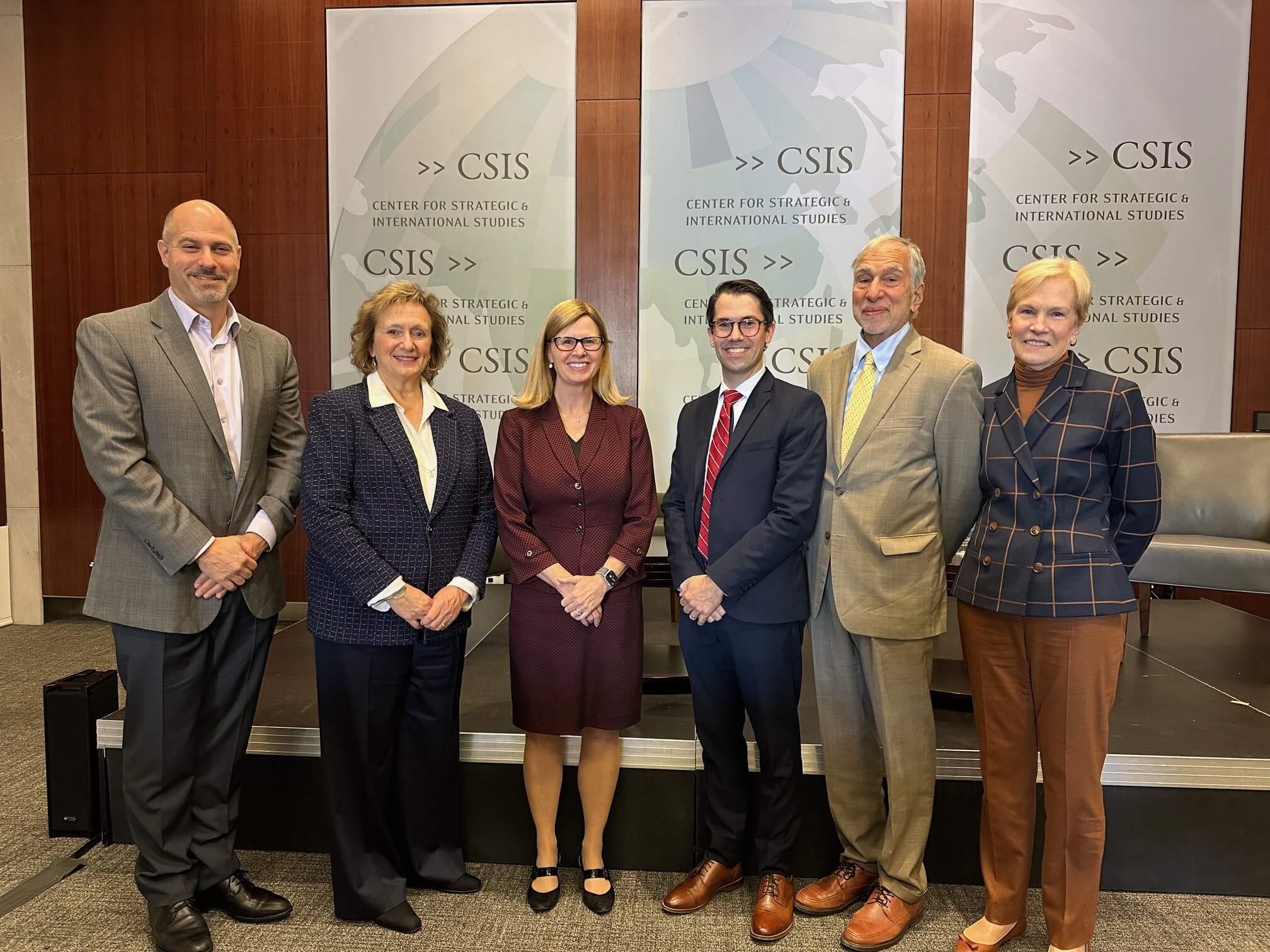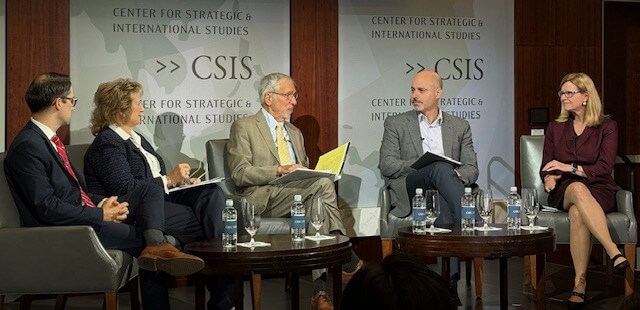
10/16/2025
Standards experts and industry executives discussed the strategic importance of standards as competitive tools and the newly released draft U.S. Standards Strategy—the nation’s blueprint for standards leadership and international engagement— at “A U.S. Standards Strategy for the 21st Century,” a public event hosted by the Center for Strategic and International Studies (CSIS) and the American National Standards Institute (ANSI).
View the recorded session on CSIS’s YouTube channel.
“Standards are the invisible infrastructure that powers our modern world,” said ANSI president and CEO Dr. Laurie E. Locascio, emphasizing their role as strategic assets that determine market access, shape innovation pathways, and influence global commerce. She quoted WTO Director-General Dr. Ngozi Okonko-Iweala's powerful observation: “Standards are the rules of the market. If you meet the standard, you meet the market.”
Dr. Locascio noted that precisely when standards have become strategic priorities for other nations, many U.S. companies are pulling back—re-evaluating standards investments as costs rather than strategic necessities. “Those who shape standards shape the future—and increasingly, nations worldwide understand this power,” she noted.
She highlighted that the updated U.S. Standards Strategy, which champions four priority areas, is a foundational document that guides how the U.S. develops standards and participates in international standardization. The document establishes a shared vision for the future and articulates the value of private sector-led, market-driven standards solutions.
View the draft 2025 U.S. Standards Strategy.
Adding their insights, panelists Patrick Hughes, senior vice president of operations and strategy, NEMA, Jason Matusow, general manager, Corporate Standards Group, Microsoft, Susan Miller, president and CEO, ATIS, and moderator Phillip Singerman, senior adviser (non-resident) at CSIS, shared how standards shape their respective businesses and industries, urgent challenges related to standards participation, and how the U.S. can strengthen its standards leadership.
Standards are the Baseline for Tech Innovation and Growth
Hughes emphasized that the electrical and energy industry is at a pivotal moment, as growth of data centers and AI is creating unprecedented electricity demand; NEMA projects 50% electricity demand growth by 2050, after decades of relatively flat demand. “We're at a moment where we need to be investing very rapidly in electricity infrastructure,” he said, adding that national security is also at stake, as his industry needs to provide reliable electricity to agencies in the DC area, military bases, and elsewhere.
“Standards facilitate this, and it's a good moment to re-release the updated standards strategy because the way we write those standards has to keep up with the pace of technology innovation,” Hughes said.
“Standardization is about getting diverse groups of people together who have individual self-interests, and they need to come together in a group for collective outcome,” said Matusow. “There is unequivocal empirical evidence that an industry-led system wins out,” he added. “When you look at every example around the world of top-down government-led standardization, it has had a less effective, less competitive outcome than when you have the diversity of interest that come together and allow for the messiness of a market-led system."
Miller shared how ATIS, the founding partner of the Third Generation Partnership Project (3GPP), focuses on critical and emerging technologies, including 6G, quantum computing, and zero trust. Reflecting on Dr. Locascio’s speech, she noted that she was particularly struck by the characterization of standards as a competitive tool. “I think that's really at the heart of what drives many of our members right now,” she said.
Looking Ahead…Share Your Perspectives at the ANSI Innovation Summit
ANSI invites stakeholders to continue the conversation and help shape the execution of the U.S. Standards Strategy on October 21 during ANSI's inaugural Innovation Summit. During a guided discussion, participants will identify actionable steps the standards community can take to implement the strategy's four priorities in 2026 and beyond.
View the agenda and register for the session here.

